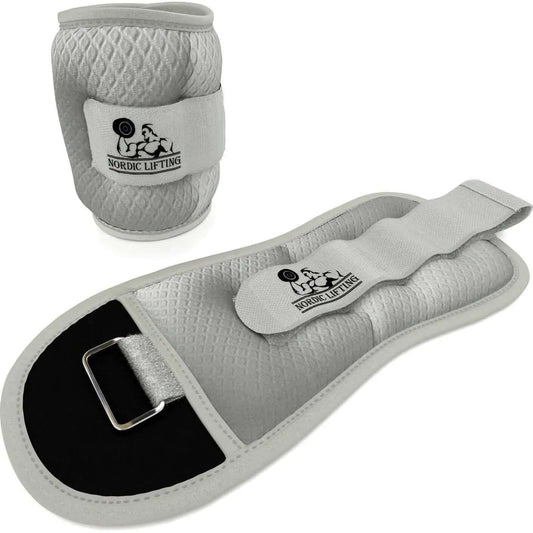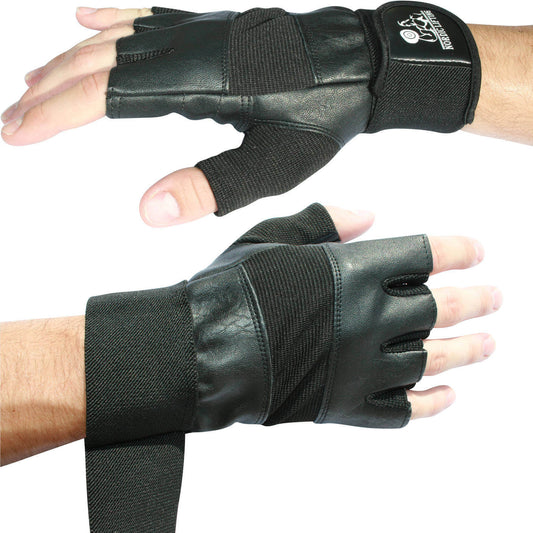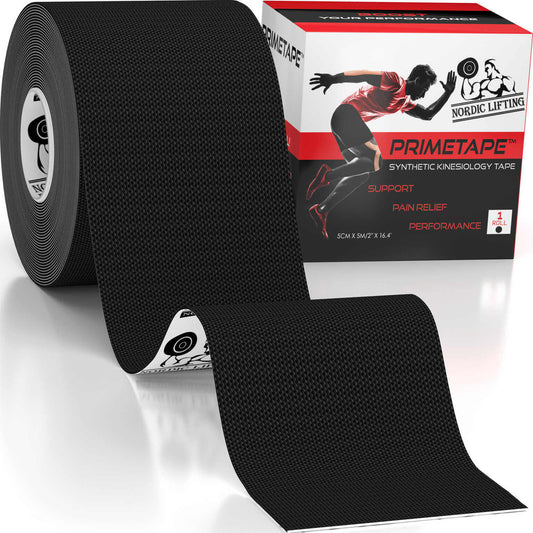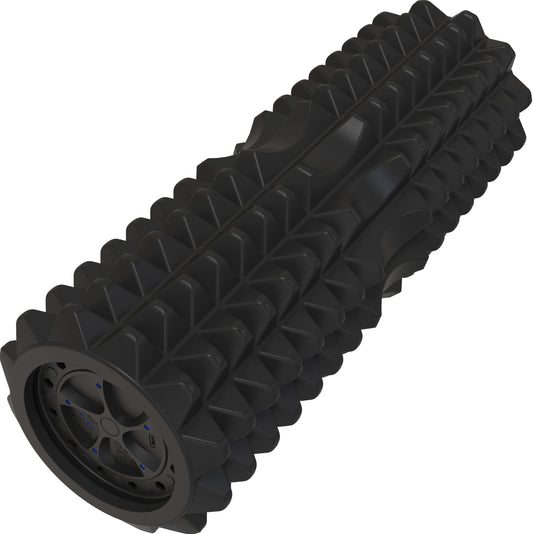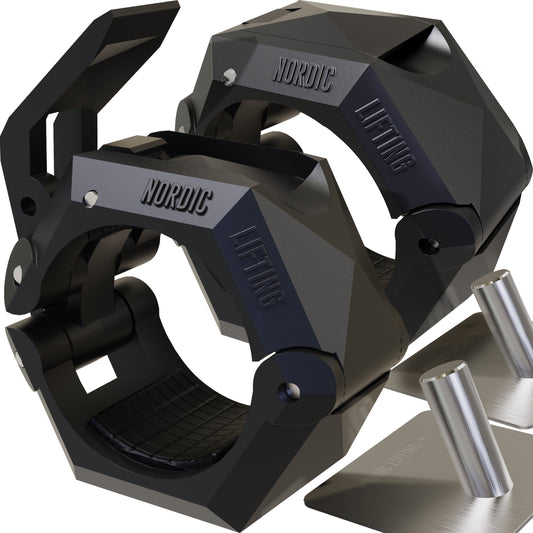What is a lower body workout? It is a muscle-building plan that concentrates on exercises influencing your lower body, specifically your legs and feet.
Squats, lunges, lateral raises, hamstring curls, shin-to-the-ground kicks, and other leg-specific exercises may be included. Lower body workouts come in many different forms, but they all have one thing in common: they're all focused on ensuring your legs function efficiently.

Lower Body Workout Purpose
Lower-body workouts are an important part of a well-rounded fitness routine that builds strength, flexibility, and balance. The lower body is the section that extends from the hip to the toes. It consists of the hip, knee, and ankle joints and the thigh, leg, and feet. Strong leg muscles keep your body grounded, which is impossible to achieve if you only work on your upper body.
A well-developed lower body improves your resting metabolism, which means your body burns more fat during rest. Lower-body workouts also utilize several of your body's major muscles, burning more calories as it expands more energy to finish them.
The prevention of injury and treating illnesses such as osteoarthritis, cardiovascular disease, and diabetes may also be enhanced by having a healthy lower body.
Benefits of Lower Body Workout
There are numerous compelling reasons to include a leg day in your regular workout plan.
Releases Hormones
Human growth hormone (HGH) is one of the hormones released when you exercise your legs. It is required for cell replication as well as the strengthening of muscles, bones, and tissues.
Testosterone is another hormone that, in addition to being a masculine hormone, helps men and women build strong bones. It may even aid in the maintenance of normal brain activity.
When you do a solid lower-body workout, your body also releases cortisol. It is a stress hormone that regulates your fight-or-flight response in stressful situations. Cortisol also improves the regulation of your sleeping habits.
Balances Body Strength
These foundational leg muscles are in charge of total body balance. You will increase your speed and coordination by strengthening your lower body. This means it is possible to minimize injuries that occur during workouts.
Since it requires you to engage both sides of your body equally, working each leg properly helps to align your body and correct muscle tension. Maintaining stability and preventing falls requires strengthening all of the muscles in the legs. Consider these muscle groups as you build a lower-body exercise program to improve your balance.
Helps Lose Weight
Lower-body workouts are beneficial for anyone attempting to lose weight. They're excellent ways to burn calories and fire up your metabolism. They also strengthen your core, which is essential for anyone who wants to remain fit.
Your legs are your body's largest muscle group. The more they exercise, the more energy they require to move them. This implies that you would burn additional calories no matter what exercise you take in, whether a leisurely walk or an intense gym exercise.
Reduces Joint Pain
One of the most notable things you can do for knee or joint pain is to work out your lower body. They reduce joint stress while increasing flexibility and strength. Muscle function and muscle balance assist in absorbing the pressures that hit the joints; therefore, strong muscles may preserve joints from wear and tear.
Regular exercise improves muscle function and may help prevent osteoarthritis in the long run. Lower body workouts, such as squats, are appropriate to incorporate into your routine as long as possible with minimal knee joint irritation.
Overall Body Wellness
Incorporating lower-body workouts into your regular routine has numerous advantages. Aside from the benefits listed above, lower body training can help create stronger muscles and improve your core. It also improves the treatment of back problems.
These discomforts can be reduced by performing a simple lower-body workout. It can strengthen your bones in general—not just your legs but also your backbones—and enhance your alignment, balance, and symmetry.

Tips for Lower Body Workouts
Any lower-body exercise or routine should begin with a five- to ten-minute warm-up. Anyone seeking regular exercise or physical activity should first contact their doctor. Breathable, comfortable clothing and athletic shoes are beneficial for exercising at home or in the gym. All workout programs should include five to ten minutes of stretching and cool-down exercises at the end.
Go Deep
Exercises that increase joint mobility and flexibility are referred to as range-of-motion exercises. An adequate range of motion is ideal since it targets every upper-body muscle. Going deeper works the glutes and hams more than shallow squats, whether squats, leg presses, hack squats, or other multijoint deep knee-bend workouts.
If you can, you should go deep; otherwise, just take it day by day and dive deeper as you go. This is done to support people who are just starting out or making an effort to recover. This is especially important for athletes who want to recover quickly and return to sports training as soon as possible
Work On Your Quads
A lower body workout includes a variety of muscular groups, notably the quadriceps, glutes, and hamstrings, but certain exercises focus on one region more than another. Your quadriceps muscles are essential for walking, running, jumping, and kicking.
Quad muscle strains and contusions can make it difficult to straighten your knee or bear weight on your leg. Keeping your quads strong can help lessen stress on your knees and enhance kneecap stability. The quadriceps muscles assist in straightening your leg and lifting your knees towards your chest. The more powerful your quadriceps are, the faster you will run.
Intensify Your Workout
When you add any amount of intensity-boosting tactics to extend a current session and make your training harder, the advantages of a good leg workout can be enhanced. Your legs are roughly half of your body and are designed to support the entire body.
You can adjust to a more intensive sort of lower-body training by increasing the intensity of your workout. Although it is advisable to begin slowly, you may want to increase your training capacity to add more strength to your leg muscles and make subsequent exercises easier.
Making use of ankle and wrist weights will spice up your workout sessions and will benefit you in a variety of ways if used properly. However, using these weights is recommended for low-impact exercises. You can always ask for professional advice from your trusted trainers if you have a couple questions in mind about intensifying your workout.

10 Best Lower Body Workout Exercises and Their Benefits
Exercises for the lower body include lunges, squats, deadlifts, and others. Leg exercises, for example, balance out your training program by assisting in the development of muscle, stability, and quickness in your lower body.
Squats—This is probably the strongest lower-body exercise for building your quads. The squat stimulates the entire lower body as well as the center and back, so it's not entirely for the quads alone. There are several other squat forms to choose from, and each one targets your muscles differently:
- Front squat
- Back squat
- Bulgarian split squat
- Goblet squat
- Overhead squat
- Pistol squat
- Sumo squat
If you have prior knee issues or are worried about the future health of your joints, you might want to try front squats. Compared to half and quarter squats, deep squats have also been demonstrated to lower the chance of injury.
Even if you have the best upper body workout routine in the world, it is useless if you have a weak lower body. You can hammer your upper body to exhaustion, but without a strong foundation pushing from below, you're just halfway there. That is why we will cover some of the best lower body exercises you can do right now!
Why do you need leg workouts?
Leg workouts are one of the most beneficial exercises for your general health and sports performance. They engage your body's key muscle groups, which helps to enhance general movement patterns and sports performance. You may increase your balance, agility, and speed by training the muscles in your legs.
It also promotes healthy movement patterns in your daily life. Leg workouts are also beneficial for stress reduction and mood enhancement. They're a simple approach to improving your general health and fitness, and you can perform them anywhere and at any time.

10 Must-Try Lower Body Exercises
Back Squat
Back squats, also known as the "king of all workouts." strengthen the backside arc of your body, which includes the lower back, glutes, and hamstrings. The quads and core are also making progress. When you squat with a heavy barbell on your back, you may overload your leg muscles with greater weight than with any other equipment.
- Your feet should be about shoulder width apart as you stand.
- Put the barbell on your upper back and support the weight with your arms.
- Squat down until your legs are at a 90-degree angle while bending at the knees.
- Regain your feet to the standing posture. Repeat.
Benefits:
- Strengthen your lower body strength.
- Develop a strong core/torso.
- Improve your body awareness and balance.
- Develop resilience in sport and in daily life.
Reverse Lunge
Reverse lunges work the core, glutes, and hamstrings. It is an excellent exercise for perfecting the lunge stance. Because the reverse lunge is a hip-dominant exercise, it is arguably the easiest of all the lunge types. This reduces the strain on your knees compared to other lunge versions.
- Straighten your back and grip a dumbbell in each hand. This is where you begin.
- Step back with your right leg about two feet from your left foot.
- While descending your body, make sure to maintain balance by keeping your chest up. Breathe in while you do this.
- Return to the starting position by pushing up. As you do so, exhale.
- As you exhale, lift yourself back up and return to the beginning position. Repeat.
Benefits:
- Enhance unilateral strength, leg muscle, and single-leg balance.
- It allows you to be more balanced when walking backwards.
- It is gentler on the lower back since it is stretched, minimizing stress on the spinal cord.
Kettlebell Swing
While kettlebell swings are a full-body workout, they focus mostly on the muscles in the back and legs. The main muscles engaged are the hamstring, spine, upper back, and glutes. Regardless of your commitment, kettlebells can be a rapid approach to obtaining a lean body. since with each repetition, you're continuously adjusting to the shifting center of mass.
- With your toes pointed like the clock hands at 11:00 and 1:00, stand with your feet slightly wider than shoulder width apart.
- Maintain a straight back, a forward-facing gaze, and shoulder blades that are compressed together as you grasp the kettlebell with two hands.
- Keep your elbows straight.
- Lock hips to lower kettlebell; let kettlebell fall through legs; then push hips to "bust" up; use hip movement to swing the kettlebell to shoulder level.
- Repeat.
Benefits:
- Strengthens your entire body's stability and stabilizes muscles.
- A high-intensity, low-impact workout that can help you burn a lot of calories.
- Strengthens cardiorespiratory fitness, strength, and power
- A great technique to raise your heart rate.
Romanian Deadlift
The Romanian deadlift primarily works your lower back, glutes, and hamstrings. The adductors, trapezius, and grip are the secondary muscles worked.
This is similar to the regular deadlift, except that the bar is lowered to roughly mid-shin level instead of all the way to the floor. It's also less taxing on the lower back because most lifters use less weight for the RDL.
- Beginning with the barbell next to your feet, bend down and hold the barbell with your shoulders slightly parted.
- Raise the barbell to your waist while bending slightly at the knees.
- Put your hips forward and lift the weight to your waist.
- Repeat the exercise with a lighter weight until it is at mid-shin level.
Benefits:
- Enhances upper back and lockout strength for traditional deadlifts
- With a single movement, it strengthens both the core and the lower body.
Walking Lunges
Lunges work the glutes, quadriceps, and hamstrings predominantly. As you lower to the ground during the eccentric phase, these muscles stretch.
Walking lunges tone the lower body proportionately. It's also good for cardio and improves your balance and posture, which can help you do other bodyweight exercises more effectively. Though static lunges tone the glutes as well, walking lunges can help you get a perfectly formed buttock.
- Hold a kettlebell beneath your chin with both hands.
- With your feet firmly planted together, stand tall.
- With your right foot, take a step forward while bending both knees to a 90-degree angle.
- Regain your balance and extend your left leg in front of your right leg. Your left leg should now be extended. Repeat.
Benefits:
- Improves unilateral leg function and strength.
- Boost leg hypertrophy.
- Bridge the gap between gym-based strength training and real-world movement and efficiency
Hip Thrust
The glutes, both the gluteus maximus and gluteus medius, as well as the hamstrings, are primarily targeted by the hip thrust motion. Your quads, core, and hip adductors will also be stimulated.
The hip thrust strengthens and bulks up your glutes and, to a lesser extent, your legs. Though the buttocks are engaged during the back squat and deadlift, the hip thrust is the closest thing to a leg muscle concentration activity.
- With your back against the side of the bench, begin by sitting on the ground.
- Your feet should be on the seat in front of you, with your legs bent. Your lower back should be flat on the ground.
- Maintain a straight line with your shoulders and the backs of your arms on the bench's side.
- Push your backside up in a single motion. Straight and angled downward, your knees should be to your neck.
Benefits:
- Increases gluteal bulk, strength, and power.
- Improved leg muscle strength leads to improved core, pelvic, and lower back stability.
- Encourages strong glutes and improve balance
Good Morning Exercise
The good morning workout targets muscle groups on your posterior, such as your hamstrings, gluteus maximus, erector spinae, and lower back. If done correctly, it will help you gain leg and back strength.
This maneuver is really complex. However, if your shoulder mobility or lower back pain is an issue, it may be better to keep your load as light as possible. Perform this exercise without weight to get a feel for appropriate form before adding a barbell.
- Put an overhand grip on a barbell and place it over your upper back.
- With your knees slightly bent, stand with your feet shoulder-width apart.
- Without bending your knees, start by leaning forward at the hips until your upper body is approximately parallel to the floor.
- Reposition the torso to the starting position after a brief pause. Repeat.
Benefits:
- Assist in preventing spinal flexion.
- This is essentially a hinge maneuver, and your lower back is what drives that hinge.
Belt Squat
Belt squatting places equivalent loads on the quadriceps, hamstrings, and plantar flexors, but less on the trunk stabilizers and gluteal muscles. Belt squats may be a good alternative to back squats if you don't want to stress your low back or trunk muscles.
Belt squats are performed on a machine or with a weight belt loaded with plates, with your feet elevated.
- Your feet should be wider than shoulder width apart, and your toes should be pointed outward while you stand on two flat benches.
- A weighted plate should be fastened around your waist using a chain or belt.
- With your knees slightly bent and your arms hanging loosely at your sides, stand straight up. You will begin from here.
- While keeping your back straight and your posture upright, inhale as you slowly drop your torso down.
- Your upper legs should be parallel to the floor when you stop.
- As you exhale, push off with your feet to slowly return to the starting position.
- Repeat.
Benefits:
- Improves the squat pattern while putting minimum strain on your spine.
- It enhances your grip play.
Weighted Step-Up
A step-up is a basic body-resistance exercise that targets the muscles in the legs and buttocks. It works the quadriceps, hamstrings, and gluteal muscles in the buttocks. This is an excellent lower-body conditioning workout.
Step-ups, particularly when loaded with dumbbells, can be a beneficial addition to your workout because they strengthen the knee and hip joints. If done correctly, the core and back muscles will also have a stabilizing function.
- Use a stable chair, box, or bench that is knee-height or less.
- On each repetition, jump as high as you can. After eight repetitions with the same leg, move to the other leg. Lower slowly.
- Be careful not to let your knee cross your toes while keeping your heel on the bench. Throughout the entire workout, keep your chest upward. Repeat.
Benefits:
- Reduce the strain on your knees.
- Aids in the elimination of size and strength imbalances
- Improves squat performance
Pistol Squat
Pistol squats target leg muscle groups such as the glutes, hamstrings, calves, and quads. It also engages your core and hip flexors. Correctly performing the pistol squat will improve your balance and coordination, as well as your athleticism and bilateral squat.
- Holding your right foot 6 to 12 inches above the ground, stand on your left leg.
- Put your hands in front of your body and hold them there.
- Your butt should be brought down to your heel by bending your left knee.
- Meanwhile, keep your right leg straight and raised off the mat.
- Simply stand back up with your left leg. Repeat.
Benefits:
- Strengthens and stretches the ankle joints.
- It enhances your balance and stability.
- Improving your natural body awareness
Simple Exercise Tools for Lower Body Workout
If you want to focus on a certain muscle and increase its strength and mass, machines and other exercise tools are fantastic. The following are some of the top exercise gear and tools you may use to develop a stronger, more powerful lower body:

Treadmill
Treadmills help tone and develop your hips, legs, and thighs. Not only does it help tone your legs, but it also aids in burning more calories. One of the biggest benefits of training on a treadmill is the flexibility you gain. You can choose the precise speed and incline of your exercise, whether you want to jog lightly or run uphill.
As a result of your treadmill activity, you will lose fat all over your body rather than only in the targeted areas of your body, which will result in thinner thighs and hips.
Leg Press Machine
A classic piece of fitness equipment, the leg press can help you develop important leg muscles. The standard horizontal leg press and the 45-degree leg press, which has a seat that reclines at an angle while your legs press upward in a diagonal motion, are the two leg press machines that are frequently seen in gyms and home gyms.
The same muscle areas are fundamentally targeted by each of these leg press machines; however, they each have slight variations in how they work. The quadriceps are the main muscles engaged while utilizing a leg press machine. The hamstrings, calf, and gluteal muscles are secondary muscles.
Vertical Leg Press
The 45-degree leg press, also known as the "angled leg press," is commonly found in gyms and has a footplate that is fixed at a 45-degree angle and an adjustable back pad. If you are fond of doing presses, squats, and calf raises, this fitness machine is perfect for you.
Horizontal Leg Press
In some ways, the 45-degree leg press and the horizontal leg press are alike. They come with a footplate that is positioned at the same height as your torso and are occasionally referred to as "seated leg presses."
Considering that they are the most user-friendly leg press models among the several options, this is a very typical asset to a gym. A seated leg press typically has a weight stack instead of being a plate-loaded machine, which is one of the other key distinctions.

Resistance Bands
Your lower body workout doesn't have to be basic, even if you only have basic equipment. Anywhere you are, you can work out to your satisfaction by using resistance bands. Remember that any movement may be changed to match your needs by using a different type of band.
Here are two of the best workouts that work your lower body using resistance bands:
Monster Walk
Monster walks are a flexible way to exercise. By changing the location of your band, you can change the degree of difficulty.
Tie a band around your ankles. You can place it above your knees if you only need a little resistance. When your feet are shoulder-width apart, you should feel tension. Take a quick forward-outward diagonal step and keep your ankles and knees in line. Change to a band with less resistance if your knees buckle inward.
Clam Shells
The clamshell exercise can help your medial thighs become substantially stronger, giving your hips additional strength and stability. Additionally, it may lead to improved agility exercises, a lower chance of injury throughout the entire lower body, as well as increased squat strength and power.
With your legs and feet touching, lie on your side with a resistance band stretched over your knees. Bend your knees at a 45-degree angle. Try to lift your upper knee as high as you can. During this phase, you shouldn't move any other parts of your body. Return to your starting position after holding the position for roughly three seconds.
Stair Stepper/Climber
Imagine it as a small escalator that has rotating stairs and handrails to keep you safe. To simulate climbing an endless flight of stairs, you simply walk where you are as the stairs begin to move. This is how a stepper works.
A stationary workout machine rotates steps like a treadmill, allowing you to climb up at the speed and duration you choose. It can give a better than average cardio workout while also training the muscles in the lower body, particularly the quadriceps and hamstrings.
Due to the fact that it is a weight-bearing activity, the stair climber offers a fantastic aerobic workout that is easy on your joints while also strengthening almost all of the muscles in your legs and buttocks. In addition to toning your lower body, the regular step motion also works your core muscles.
Alternating the machine's pace will allow you to workout at your preferred level, be it moderate steady-state aerobics or high-intensity strength exercises. Anyone may use a stair climber, and it's a great technique to increase pulse, enhance cardiovascular endurance, and build stamina.
Leg Extension Machine
Possibly the greatest machine for focusing on just one muscle area. You extend your legs 90 degrees from a seated position using the leg extension machine. It doesn't feel as comfortable as it seems. You will rapidly begin to feel the burn because the resistance is entirely on the quadriceps in the front of your thighs.
The front of your upper legs' quadriceps will greatly benefit from this exercise. On a leg extension machine, leg extensions are performed. You place a weighted pad on top of your low back as you sit on the machine. As part of a strength training routine, you can utilize this exercise to develop lower-body strength and muscular definition.
Key Takeaways
Everyone has varied preferences when it comes to exercises. Aside from appropriate running shoes, some people choose jogging or walking because they don't need any special equipment. For their everyday workouts, some people prefer using hand-held weights, while others prefer using full gym equipment. Depending on a person's fitness and health objectives will determine the equipment and gear they choose.
Whatever your choices, using workout equipment can help you have more control over the muscles you wish to develop. You can increase your strength and stamina by having better resistance. Just keep in mind that it is always best to consult a certified trainer for safety measures.







